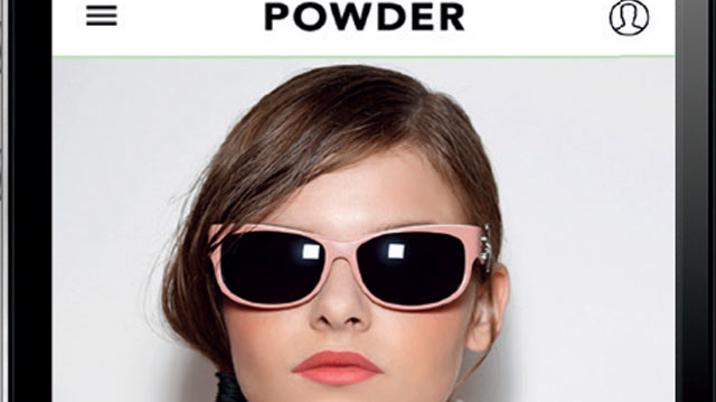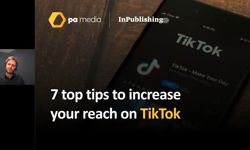
When Time Inc executives were brainstorming about where to build new revenue streams, they identified beauty as a key area of the business which was ripe for expansion, with leading brands such as Marie Claire, InStyle and Woman&Home providing the expertise on which to found new ventures including e-commerce.
Then came a serendipitous breakfast meeting, at which Justine Southall, managing director of Marie Claire, discussed the brand’s ambitions to move into the beauty retail sector with a client who introduced her to Tim Steiner, chief executive of Ocado.
Partnering up
Southall explains: “It became clear to both parties that there was an opportunity through a joint venture partnership to create something really distinctive and different that really utilised both of our strengths. From the Marie Claire point of view, those are amazing credentials in content, authority, and understanding the beauty market, plus very strong relationships with our beauty brands. From the Ocado side, they are valued and famed for their world-leading e-commerce infrastructure and service.”
She adds: “If you want to be a serious player in e-commerce, then you have to work with partners who do that for a living and are at the forefront of their game in the way that we are at understanding our audience and creating content.”
The two companies signed a deal and went “hell for leather” to launch a new business. Their concept was a dedicated e-commerce website with top quality beauty editorial, selling the premium brand beauty products usually found in department stores, featuring names such as Lancôme, Estée Lauder, YSL, L’Oréal, Urban Decay and Benefit. Amanda Scott, John Lewis’s head of buying for beauty and accessories, was hired as managing director. Fabled by Marie Claire was born.
The website fabled.com launched in September 2016, offering customers next day delivery on a wide range of beauty products. “You can buy your Estée Lauder lipstick at 11.15am on a Tuesday and book your hour slot for delivery exactly when you want it on Wednesday. It’s market leading to be able to do that with that level of specificity,” says Southall. The website now offers around 12,000 products from some 200 brands.
Complementary but separate
Although Southall sits on both the Fabled by Marie Claire board and the magazine’s board, the two are completely separate. “It’s very important because you need to have a clarity and integrity between the two businesses. One is a full-scale, very ambitious retail business and the other is a media business.” She admits that when it came to launching Fabled by Marie Claire, “a lot of that was predisposed on the relationships that we had with the beauty brands and therefore the comfort and knowledge that this would be done properly”. Scott’s background at John Lewis also helped.
Fabled by Marie Claire has a dedicated editor, Sam Dean. While the e-commerce site is run separately from the magazine, Southall reveals: “There is an enormous amount of shared intelligence, just in terms of being able to look at editorial planning through the year.” But she insists: “Whatever we choose to write about in Marie Claire, on the website, through our social channels, that is the choice of the (magazine’s) beauty director. We have to have that integrity.” However, she sees it as “very much a benefit” that if a brand featured in the magazine is stocked on Fabled, readers can then go and buy it from a Marie Claire store.
Early challenges
One of the hurdles the new business had to overcome was the strict rules surrounding the sale of premium beauty products. Most of the leading luxury brands are signatories to a restrictive agreement about where and how their products can be sold. One of the stipulations is that premium beauty products should not be sold by grocers, which means that the marketing of Fabled by Marie Claire on the Ocado site needs to be very carefully managed; for example, it cannot feature on the main navigation bar. The agreement also requires that retailers must have a bricks and mortar store. To meet this requirement, Time Inc decided to launch a flagship Fabled by Marie Claire store on Tottenham Walk, an up and coming area next to London’s forthcoming Crossrail development. Southall admits: “We started off thinking we can tick the box. The more we went along, the more we realised it was going to be considerably bigger and a lot more of a statement than we originally anticipated.”
Fabled by Marie Claire is not just targeted at the magazine’s readers. “This is a major scale retail launch so it already is and will be substantially bigger than the audience that we can deliver through Marie Claire,” insists Southall. The first round of customer satisfaction surveys show high levels of satisfaction ranging from the just over 80% to over 90%. Usage is split approximately 50/50 between mobile and laptop - “people do research on mobiles and buy on their laptop” says Southall - and around half of customers are aged between 18 and 34 - “which is a really strong statistic in that premium beauty space, compared to say a department store that has an older customer”. All this has been achieved by a small team. “It’s two very well established businesses behaving like an agile start-up,” explains Southall.
Personalised beauty tips
Even more akin to a start-up is mobile-first personalised beauty site Powder, another of Time Inc’s new forays into the beauty market. When users sign up online - usually on their mobile phone - they are asked a series of questions about their age, skin tone and any issues troubling them such as dry skin, oiliness or redness, then they are given personalised recommendations for a range of beauty products including foundation, mascara, lipstick, blusher and concealer.
Bethany Ostacchini, publisher and editorial director of thisispowder.co.uk explains: “Time Inc owns a lot of the beauty category for advertising. We felt it was a space we wanted to look at new revenue streams and also new projects and new products. Some work had been done around data-led propositions and also around personalisation. It was given to me to create a product, build a brand and launch it into the market.”
It was decided to soft launch thisispowder.co.uk and for most of 2015, it remained a beta testing site, to assess whether this was a product consumers wanted and to gauge the reactions of advertisers. “For us, it was about establishing the proof points before we started scaling up the business,” says Ostacchini. Being part of a global publishing company helped, as they were able to use brands such as Marie Claire and InStyle to “seed” Powder, for example by reciprocal linking between their websites.
Consumer testing
Consumer testing has been very much at the heart of developing the site. “We get people to sit on their phones and see if they can make it on that journey.” This was important when deciding the tone of the site, explains Ostacchini: “We are asking people to give us a lot of data so we don’t want the site to feel robotic or creepy. Rather than using plain language like ‘next’ to go through to the next page, we might write something like ‘let’s go’, because it feels more friendly and personable. It became very apparent very quickly that when we did that, it was much more successful.”
Because the site is personalised, it appeals to a wide span of users, although the bulk are between 20 and 45. Ostacchini reveals that the hardest demographic to please has been 40 to 50-year-olds. “One woman in her early 40s might be a new mum, another woman in her 40s might have a 20-year-old daughter, so that age group has been our most challenging.” The site now has over 150,000 subscribers and 450,000 monthly unique users, all while remaining a celebrity-free zone. “It’s easy to get traffic if you write a Kim Kardashian story. Our aspirational side is through beautiful model imagery, personalisation and tips,” says Ostacchini.
Powder is first and foremost an editorial proposition, combining sophisticated algorithms with bespoke content, and as such it has made native advertising its USP, with seamless sponsored articles such as a feature on the Korean skincare regime used to promote Kiehl’s products. When readers click on individual products, they are directed to a third-party site to buy them - usually a well-respected e-commerce site such as John Lewis or Space NK.
But Powder has also made a foray into e-commerce with its beauty boxes, which are sold quarterly as a one-off purchase rather than by subscription. Their point of difference from other beauty boxes on the market is their luxury feel - and Ostacchini says they contain around £150 worth of products for just £30, made possible because “it’s a key way for brands to sample their products to a highly engaged beauty audience”.
The boxes are proving a big revenue stream and there are now plans to expand and grow this side of the business, as well as increasing the number of product review categories from around 25 to 60. Over at Fabled by Marie Claire, plans for the coming year include continuing to fine tune the store and site and improving the offer around gifting - including gift cards and a wrapping service.
“We shouldn't any of us underestimate the power of media brands,” concludes Southall. “There’s so much discussion around print and digital. It isn’t either or. In a world in which there’s so much more noise and clutter, where do you go and how do you navigate your way around? That’s where magazine brands come into their own.”










